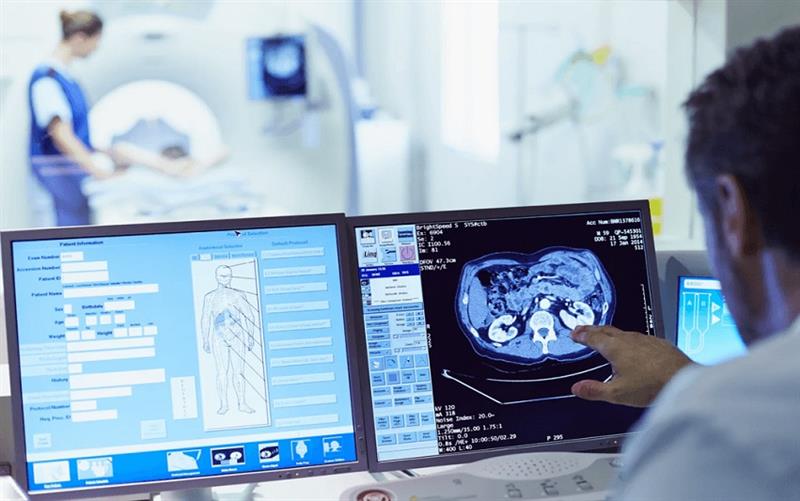
Patient communication is being transformed by medical IT solutions, which increase its effectiveness, accessibility, and personalization. These innovations, which range from telemedicine and patient education tools to real-time messaging, are increasing patient participation and raising the standard of treatment overall. Accepting these developments as technology develops further is essential to providing outstanding patient experiences and promoting improved health outcomes.
Effective communication between patients and healthcare providers is more important than ever in the quickly changing healthcare environment of today. Medical software solutions are becoming increasingly important as a result of technological improvements in improving patient communication and, consequently, overall patient outcomes and satisfaction. This blog examines how patient communications and interactions in healthcare settings are changing as a result of contemporary medical software solutions.
1. Personalized Patient Engagement
Features for individualized patient involvement are frequently included in medical software solutions. Providers can customize communication depending on the requirements, preferences, and medical conditions of each patient thanks to advanced analytics and data integration. Patients can be reminded of impending screenings, preventive care, or lifestyle modifications using automated, customized communications. Through the focus on particular health objectives and issues, these solutions support continuous patient involvement and treatment plan compliance.
2. Improved Care Coordination
Good communication across various healthcare providers is necessary to offer patients with complete care. By offering a single platform for exchanging patient data amongst specialists, primary care physicians, and other healthcare providers, medical software systems help to improve care coordination. Treatment plans are more cohesive and successful when an integrated strategy is used to guarantee that all members of the care team are informed and in agreement.
3. Patient Feedback and Satisfaction
Comprehending the experiences and happiness of patients is essential for the ongoing enhancement of healthcare services. A lot of medical software packages come with tools for gathering patient input via satisfaction questionnaires and surveys. In order to address patient concerns, improve overall quality of service, and identify areas for improvement, healthcare providers benefit from this feedback. Healthcare organizations show their dedication to patient-centered care by proactively seeking out and addressing patient input.
4. Integration with Wearable Devices
The emergence of wearable health technologies has created new avenues for communication between patients. Wearable technology and medical software solutions can work together to monitor patient metrics including heart rate, blood sugar, and physical activity. Healthcare professionals can access this real-time data to facilitate better informed conversations during patient visits. By providing them with prompt feedback and direction based on their health data, patients can take a more proactive approach to their care.
5. Secure and Compliant Communication
In healthcare communication, patient privacy and data security are crucial. Strict legal requirements, including HIPAA (Health Insurance Portability and Accountability Act), are followed by contemporary medical software systems to guarantee the security of patient data. Patients can feel secure knowing that their data is handled properly and privately thanks to secure access controls and encrypted communication routes.
6. Automation and Workflow Optimization
Medical software's automation features can help to expedite a number of administrative duties, including patient check-ins, insurance verifications, and billing procedures. These features free up healthcare workers time to concentrate more on patient care and communication by lessening their administrative workload. Additionally, workflow optimization increases productivity, lowers mistake rates, and enhances the general patient experience.
7. Apps for Mobile Health (mHealth)
Patient communication using mobile health (mHealth) applications is growing in popularity. Through these apps, patients may use their cellphones to track their progress, have access to their health information, and get in touch with their healthcare providers. Patients can maintain their engagement in their health management while on the go thanks to the ease and flexibility provided by mHealth applications.
8. Predictive insights with data analytics
Predictive insights from advanced data analytics are included into medical software solutions to improve patient communication. Healthcare professionals can predict possible concerns and take proactive measures to solve them by examining trends and patterns in patient data. By assisting in the identification of patients who might require extra assistance or intervention, predictive analytics enables prompt and focused communication.
9. Enhanced Patient Portals
A key component of many medical software systems are patient portals. Patients can safely and round-the-clock access their test results, medical histories, and treatment plans through these patient portals. Portals provide improved patient participation and comprehension of their health situations by giving patients direct access to their medical records. In addition, without having to call or come into the office, patients can ask questions, obtain prescription refills, and contact with their healthcare providers via encrypted messaging.
10. Real-Time Communication Tools
The integration of real-time communication tools, such live chat and video consultations, into medical IT solutions has gained significant traction. Virtual appointments are made possible by these solutions for healthcare practitioners, which is especially helpful for follow-ups, consultations, and minor medical issues. These are really helpful tools for patients who might have trouble traveling or who would rather have consultations remotely. Furthermore, real-time chat tools enable prompt resolution of queries and issues, improving patient satisfaction and cutting down on wait times.